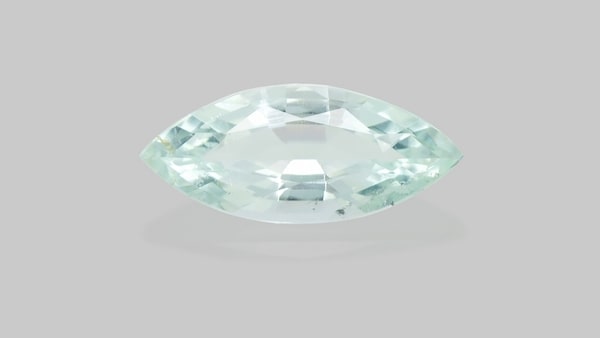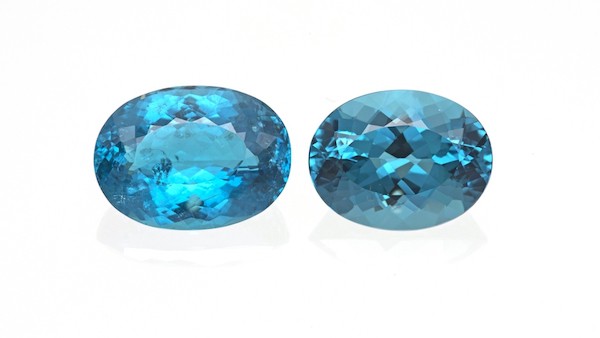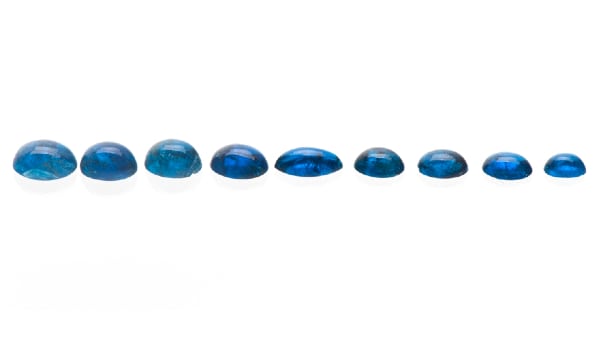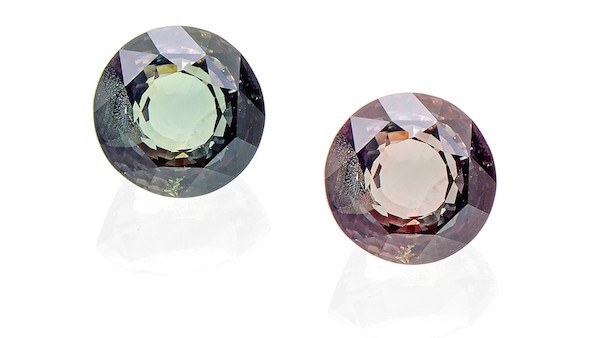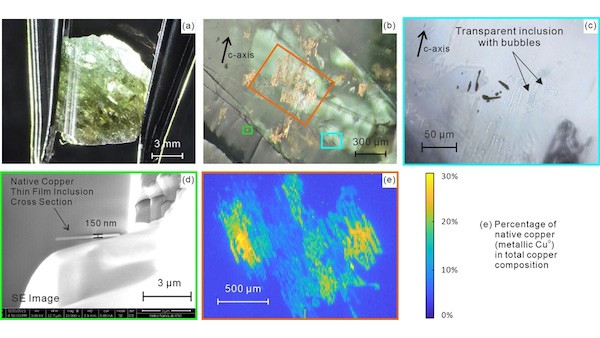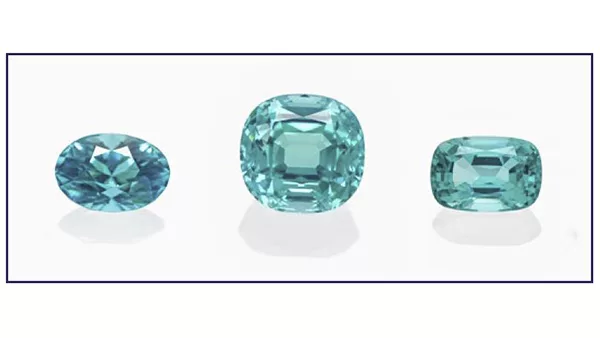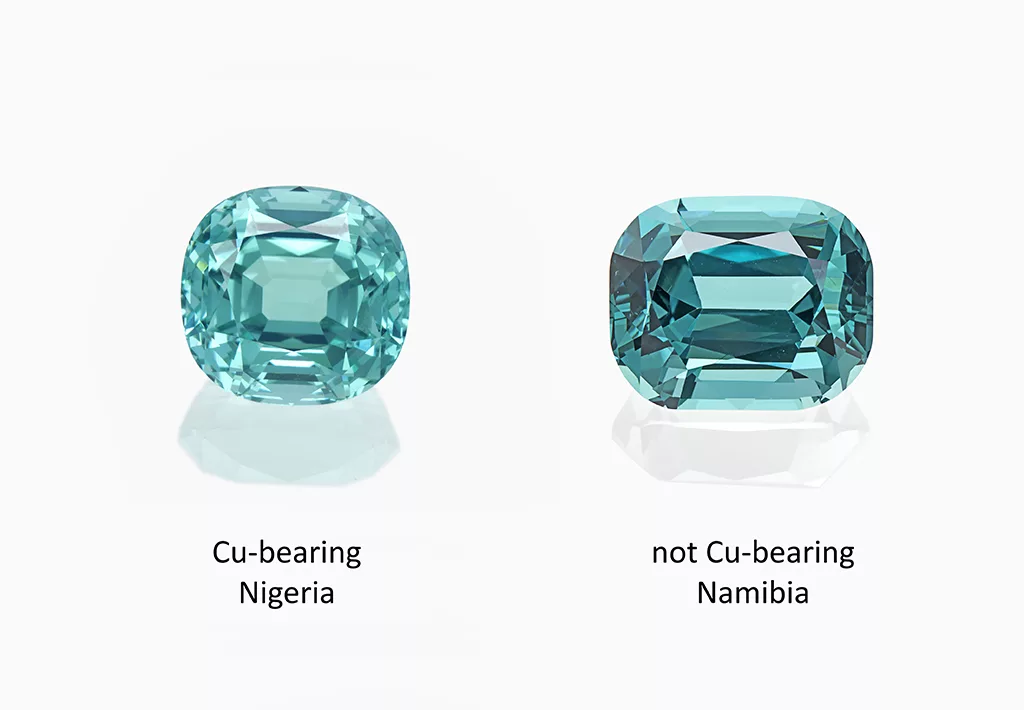The colour range of Paraiba tourmalines
Paraiba tourmalines owe their attractive colour to the presence of copper. In the best case, this gives rise to a vivid blue colour, also known in the trade as ‘neon’ blue or ‘electric’ blue and not known from any other gemstone in nature.
Exceptional set of tourmalines
Paraiba tourmaline is among the most highly prized of gems today and they are sought after for their vivid colour ranging from blue to green.
Further Characterisation of Native Copper Inclusions in Cu-Bearing Tourmaline
Further Characterisation of Native Copper Inclusions in […]
Saturation too low for Paraiba tourmaline
Copper-bearing tourmaline, also known as Paraiba tourmaline in the trade, may come in a range of colours from blue to green. Similarly, the colour saturation of such copper-bearing tourmalines may vary largely, from saturated and vibrant – also known as “electric” or “neon” – to very light coloured.
A perfect match: Paraiba tourmaline and Indicolite tourmaline
A few months ago, a client submitted to SSEF two tourmalines of attractive and matching shape, size and colour, both supposedly being Paraiba tourmalines (Figure 1). Chemical analyses and absorption spectra (UV-Vis-NIR) quickly revealed that their composition and colour cause was much less matching than their v
Blue surprise: apatite and not Paraiba tourmaline
Last summer, the SSEF received a series of nine small blue cabochons ranging in weight from 0.4 to 1.5 ct. The client assumed that these stones were Paraiba tourmalines from a very early production of the Sao José da Batahla mine in the state of Paraiba in Brazil, as they were safeguarded for several decades
An interesting chrysoberyl-alexandrite combination
The mineral chrysoberyl BeAl2O4 is an attractive gemstone that shows a wide variation of colours mostly ranging from yellow to green and brownish green to dark brown. These colours are mainly due to the presence of iron and sometimes vanadium as chromophore elements inside the crystal lattice structure.
Native copper inclusions in copper-bearing tourmaline: a new formation scenario?
Gold-coloured platelet inclusions have been reported in copper- bearing tourmaline from Paraíba State in Brazil since the discovery of this highly sought-after gemstone (Fritsch et al., 1990) in the late 1980s. Until now, this extraordinary type of inclusion in tourmaline was mentioned in the literature only
Paraiba or Not? Cu-bearing Tourmaline with a Distinct Fe Concentration
Paraiba or Not? Cu-bearing Tourmaline with a Distinct F […]
New copper-bearing tourmalines from Nigeria
Copper-bearing tourmaline from Nigeria is known in the trade since about two decades (Milisenda 2001, Henricus, 2001; Smith et al., 2001; Zang et al., 2001). The first reported material from Nigeria was rather of aquamarine- to amethyst-like colours, but shortly after it was followed by a limited and sporadic p



